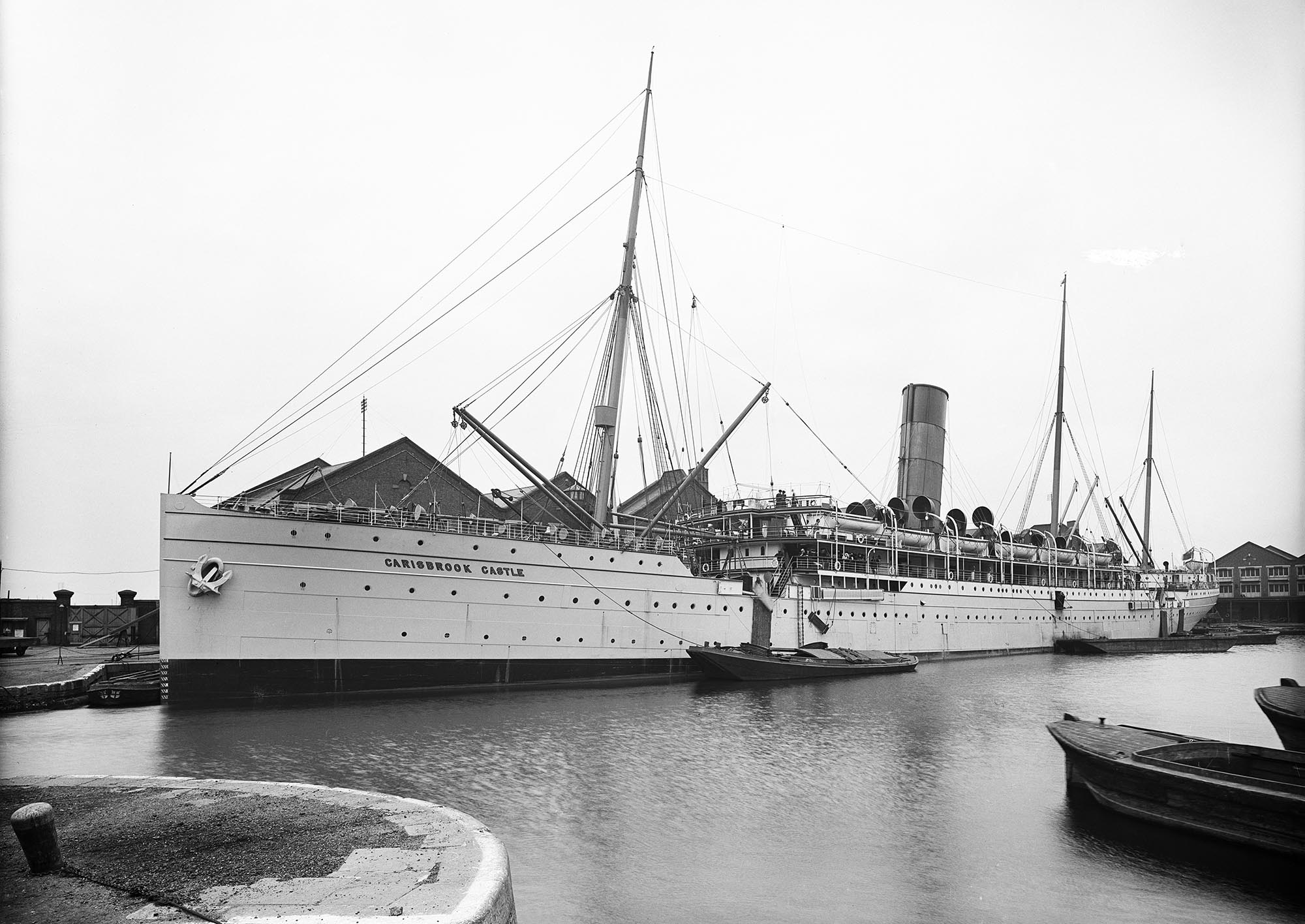Shipboard Nurses in the First World War
Despite being confined to shore duties in the Women's Royal Naval Service (WRNS), many women did serve at sea during the First World War as nurses aboard British hospital ships, braving both the natural hazards of the sea and the new offensive capabilities of the U-boat, which gradually tightened a stranglehold on Britain through sinking her shipping, aiming to prevent Britain carrying on her economically valuable export trade and receiving vital food supplies.
The first hospital ship to be lost during World War I was a victim of the elements. In a vicious storm in October 1914, Mrs Mary Kezziah Roberts was shipwrecked aboard the Rohilla at Saltwick Nab, off Whitby. Rohilla was an ocean liner, converted into a hospital ship, bound from Scotland for Dunkirk to pick up wounded men from the Flanders battlefields.
Mrs Roberts was well-placed to serve as a shipboard nurse, since she had had previous experience as an ocean liner stewardess. The impact was so severe that at first it was thought Rohilla had hit a mine. Despite being so close to land, she was difficult to reach, rescuers facing the same severe weather conditions which had driven the ship ashore. Just over a third of those on board died, but all the women aboard survived: "women and children first". This was Mrs Roberts' second shipwreck, for she had been rescued two years previously from the Titanic and she later considered the Rohilla to have been the more traumatic of the two experiences.
The dangers of working aboard hospital ships intensified following the German declaration in January 1917 of "unrestricted submarine warfare", sinking merchant ships without warning. Though hospital ships, painted with the internationally recognised symbol of the Red Cross to signify their humanitarian purpose, were meant to be the exception, in practice they were not exempt from attack.
In 1918, Rewa, Rohilla's sister ship, also turned into a hospital ship, foundered in the Bristol Channel after being torpedoed. Though only three men, out of 550 people on board, were lost, the sinking caused worldwide outrage at the targeting of vulnerable patients. The explosion extinguished the lights on board so that patients had to be evacuated into winter seas with what little clothing they could quickly pick up in the dark.
The sinking of ‘Warilda’
The case of Warilda, a former Australian liner, partially explains why humanitarian vessels were targeted. On 3rd August 1918 she was torpedoed in mid-Channel, en route from Le Havre for Southampton with wounded American and British troops. In fact, she was named by the Admiralty as an "ambulance transport", a fine distinction since hospital ships were not permitted to carry munitions but transports carried "Government stores" on the outward-bound passage to France. This led to protests that their voyages were not entirely innocuous; although Warilda was, in fact, on the homeward-bound passage with her vulnerable human cargo.
The loss of life was high and was naturally highest among the patients and the medical personnel. Nurses remained calm and tried to insist that their patients took priority but the "women first" drill still prevailed and their protests were ignored. A lifeboat with six women capsized, all of whom were rescued by five of their former patients. The most prominent female casualty was Mrs Violet Long, Deputy Chief Controller of Queen Mary's Army Auxiliary Corps (QMAAC), who was crushed between the ship's side and the boat in the evacuation. She came from a family noted for advancing the cause of women's war work: her sister Mrs Burleigh Leach, (later Dame Florence Simpson), was the QMAAC's Controller-in-Chief.
Documentary evidence relating to Warilda.
Possible remains south of Selsey Bill, not positively identified as Warilda.
Pioneers in Women’s Naval Service
Many other hospital ships were lost to war causes both inside and outside English waters, for example the Llandovery Castle off Ireland, and so it was that nursing staff found themselves unexpectedly on the frontline at a time when women were not expected to serve directly in the forces but to act as auxiliaries and to free up men for service. The women in the Women's Royal Naval Service (WRNS) and their QMAAC sisters, for example, acted in catering, driving and storekeeping roles.
The political repercussions of exposure to the same sudden, deadly, and unpredictable maritime frontline as their brothers, husbands and sons in the navy and mercantile marine, were profound: war service was just one of the many factors making withholding emancipation increasingly difficult to justify.
In 1918 there was a limited extension of the vote with full suffrage achieved in 1928. These women were the pioneers of the many who served in the ensuing conflict of the Second World War and of those who have played a full role in the services since the abolition of separate women's services in the 1990s.
Other hospital ships lost in English waters:
- Anglia, Irish hospital ship, 1915, off Dover
- Donegal, British casualty clearing vessel, 1917, off Sussex, wreck event
- Donegal, site of possible remains
- Kyarra, 1918, Australian hospital ship, off the coast of Dorset
- Glenart Castle, 1918, British hospital ship, Bristol Channel, west of Lundy





